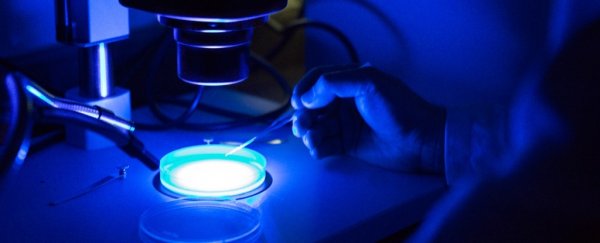Scientists have identified a new class of antibiotic that could help us fight the scourge of deadly superbugs, thanks to the molecular properties of something you should have in your diet every day: Vitamin A.
One of the reasons antimicrobial resistance is so dangerous right now is because most of the antibiotic drugs we know about were developed around a singular purpose: to inhibit bacterial growth. That sole focus may have been costly.
Why? Because while antibiotics can kill active bacteria, the virulence of superbugs is in part powered by what are called 'persisters': metabolically inactive sleeper cells that are resistant to known antibiotics in their dormant state.
Now, new compounds discovered by infectious diseases specialist Eleftherios Mylonakis from Rhode Island Hospital and Brown University could help us combat these persister cells, via two synthetic retinoids: molecules that are chemically related to vitamin A.
To find these two retinoids – called CD437 and CD1530 – Mylonakis's team had to cast a wide net, ultimately screening some 82,000 synthetic compounds, before identifying 185 candidate compounds that protected the roundworm Caenorhabditis elegans from the deadly staph infection, MRSA (methicillin-resistant Staphylococcus aureus).
MRSA is ranked as one of the deadliest pathogens on the planet by the World Health Organisation (WHO), but it might have met its match in CD437 and CD1530.
"We found that CD437 and CD1530 kill both growing and persistent MRSA by inducing rapid membrane permeabilisation without detectable resistance development," Mylonakis told ScienceAlert.
This effect – which was demonstrated in both C. elegans and in a mouse model of MRSA – was due to the disruption of the bacteria's lipid-based membranes, which made these retinoids deadly against bacteria when coupled with the existing antibiotic gentamicin, which is usually ineffective against persister cells.
One of the ongoing challenges for the researchers is to modify the properties of the retinoids so as to retain maximum potency against MRSA, while minimising toxicity.
"The molecule weakens the cell membranes of bacteria, but human cells also have membranes," chemist William Wuest from Emory University explained in a statement.
"We found a way to tweak the molecule so that it now selectively targets bacteria."
While we're a long way from seeing these early results replicated in a test with humans, an eventual clinical trial is hoped for, and the most exciting thing about these antibiotic candidates is that they don't seem to trigger any signs of resistance in the bacteria so far.
"Our failed efforts to develop meaningful resistance over exposing large numbers of bacteria in increasing concentrations of the compounds make us optimistic about potential resistance," Mylonakis told ScienceAlert, noting that even 100 days of trying to induce resistance did not bring it about.
It's a promising start, but we're already up against the clock – with superbugs predicted to kill 10 million people by the year 2050.
"In a simplistic way it's a math problem," Mylonakis says.
"It takes the bugs an average of two years to develop resistance to antibiotics. It takes more than 10–15 years of work to get an antibiotic into clinical practice."
The findings are reported in Nature.
